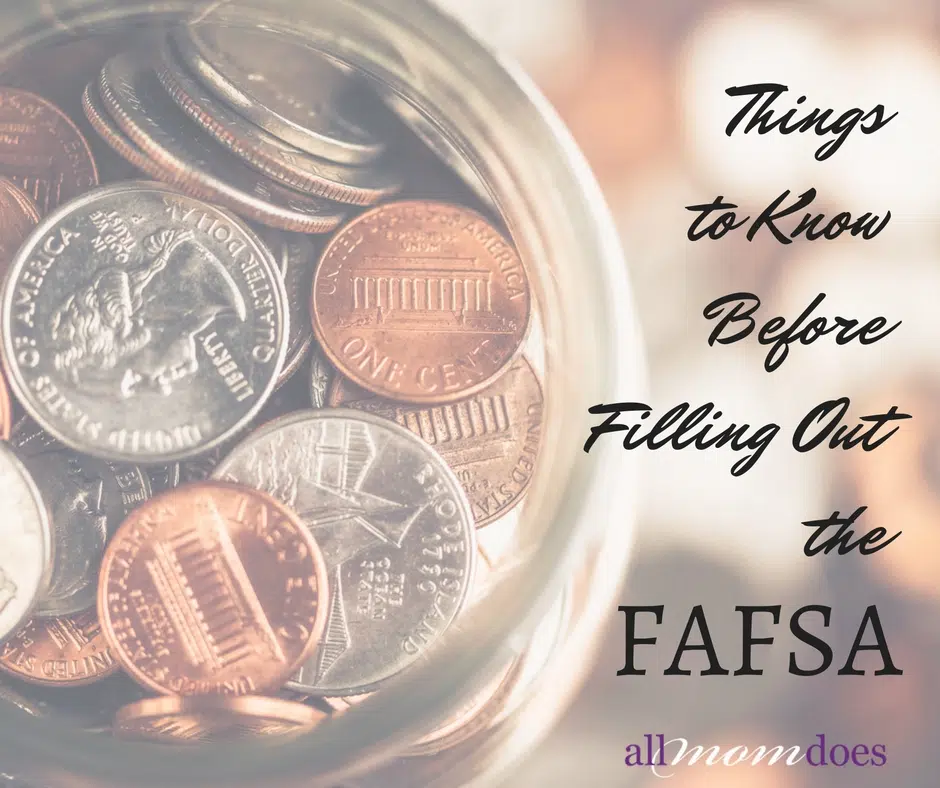If you have a college-bound student in your home you’ve likely had a thought or two about how to pay for higher education. You’ve also probably heard about the FAFSA.
As the government’s single application for federal financial aid, its reputation reaches far and wide. People who haven’t even looked at the FAFSA are simply overwhelmed at the thought of filling it out.
If that’s you, stop worrying right now. I’m going to tell you a few things that will make you confident that you and your student are ready to tackle that application this weekend.
1. Don’t freak out. It’s not that hard.
I know you’ve heard it’s hard. And they do ask for financial information. But if you have your tax return on hand, you’ve already got almost everything you need. Plus, as you’re filling out the online application it gives you tips. As in “enter the number from line 37 on your IRS 1040.”
If you can transfer numbers from one paper and enter them into an online form, you can fill out the FAFSA.
2. You don’t have to know where you’re attending before you fill it out.
Financial Aid application deadlines can be shockingly early – sometimes before you even know where you’ll be attending. You can have your information sent to many different schools so you definitely shouldn’t delay filling out your FAFSA until a final school decision is made. The sooner, the better!
3. Student Loans are considered Financial Aid, and require a FAFSA application.
I can’t tell you how many people have said to me, “My family makes too much money for Financial Aid, so I just want to take out student loans.” Most people equate the term financial aid with free money, but the fact is that in order to get government-backed student loans you DO need to fill out the FAFSA. Even if you’re pretty confident you won’t quality for grants or income-based aid, you should still fill out the FAFSA. Student loans through the government are way better than private loans, and you can’t get them unless you fill out the FAFSA!
4. Yes, parents need to provide their information.
Right or wrong, the government has made the decision that parents are partially responsible for the cost of higher education if the student is under the age of 24 and unmarried. Yes, most 23-year-olds are living on their own and paying their own way. No, I don’t necessarily think it’s fair, and neither does your student (probably).
But that’s neither here nor there.
Long story short, there really isn’t a way around it – and parents who refuse to provide their information make their child ineligible for grants.
If a parent is hesitant to fill out the FAFSA because they’re worried that they’ll inadvertently be saddled with loans, let me assure you that they won’t. Each individual (both student and parent) will have an electronic signature (“FSA ID”) and if the parent keeps theirs private, there is no way the student can sign a promissory note on behalf of their parent.
They may be able to sign for their own student loan, but not a parent loan. So don’t worry.
(For students with more than one set of parents, see here for guidelines that determine which set of parents will need to fill out the FAFSA with them.)
5. Gather all your information before you begin to make it super simple.
The only reason the FAFSA can be tough to fill out is when they ask you a question you don’t have the answer to. So to prevent that, make sure you have all the necessary information at your fingertips. You can find an official list here.
So parents, stop dreading it and putting it off. Sit down with your teen this weekend (next year’s FAFSA was released early so it’s ready and waiting for you!) and honestly – it’s entirely possible you’ll be done in 30 minutes or less.
For more resources on how to fill out the FAFSA, see:
- StudentAid.gov (official government site)
- Fastweb.com
- FinAid.org
Do you have questions about the FAFSA or the Financial Aid application process? Leave your questions in the comments below and we might answer them in a future blog!

















